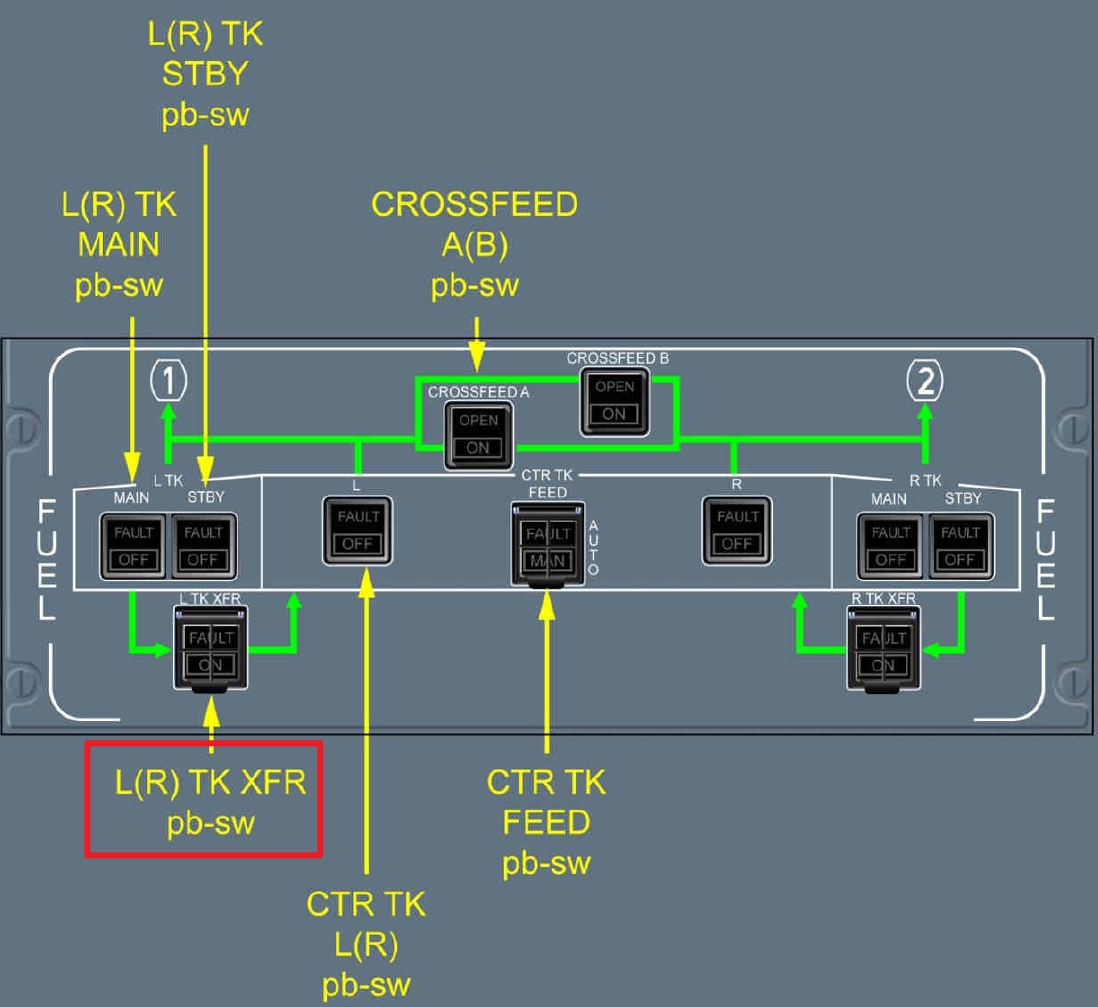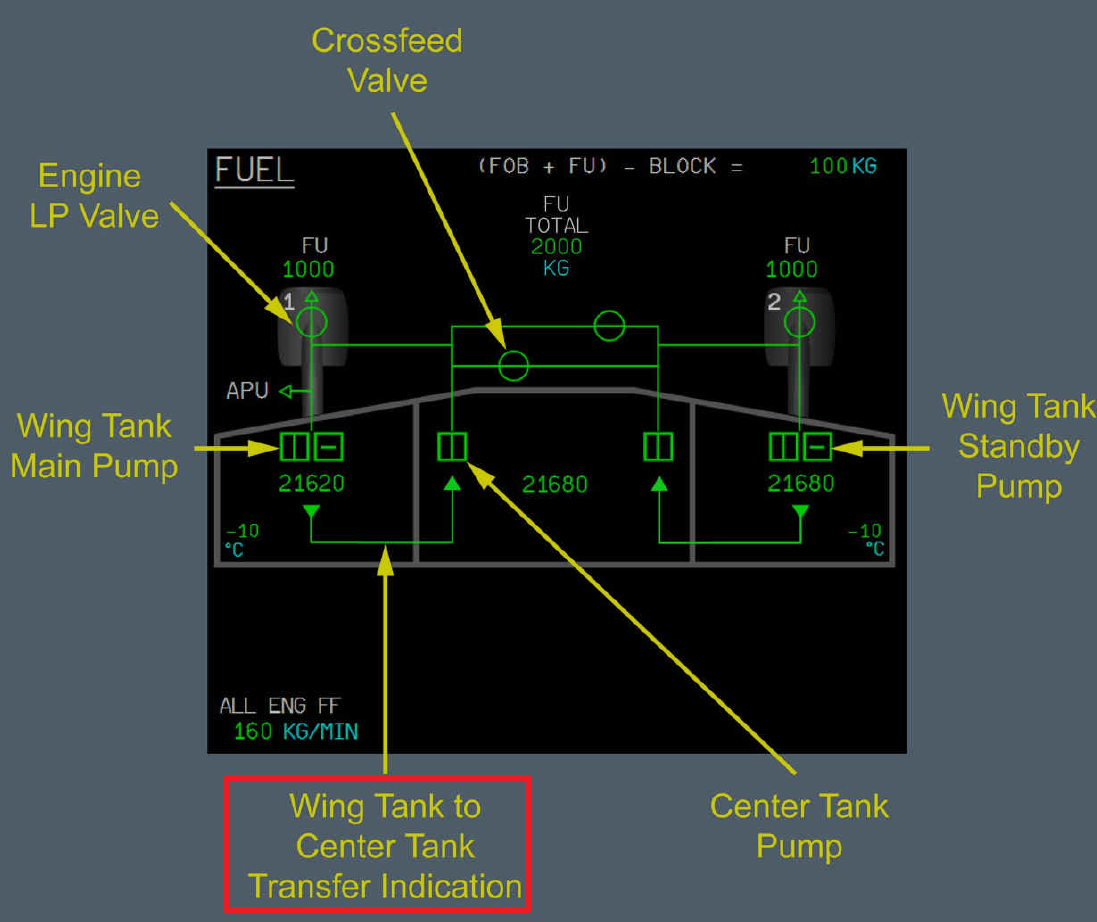A350 使用L(R) TK XFR 按钮接通,可以打开加油管路中机翼油箱和中央油箱的 INLET VALVE,机翼油箱的油会重力传输到中央油箱。这种途径一般是在交输活门不工作(故障或者被要求关闭),以及机翼油箱泵不工作的时候会用到。
FUEL CROSSFEED VLV A+B FAULT 的程序:
那如果遇到机翼油箱泄漏,用 TK XFR 来将机翼油箱的传输到中央油箱,不就可以尽可能的保存一些燃油么?但程序里并没有这个动作。
这个问题来来回回问了空客3次。第一次回答说 TK XFR 传输速率很低,与漏油相比可以忽略,意义不大。我又问很低是由多低,再低也能保存一部分燃油吧,而且在 FUEL L(R) MAIN+STBY PMPs FAULT 中,当使用 TK XFR 向中央油箱传输燃油之后,都可以用来保证发动机供油,说明传输速率超过发动机油耗速率,不算低了。
第二次空客的回复完全错误,没有可参考性。知道第三次才给出了一个勉强可以拿来讨论的说法
空客认为,从理论上讲很难出现大量燃油的直接泄漏(这就已经与第一次的回复不一致了),实际运行中也没有出现过这样的事件,所以考虑到燃油的可用途径,最好还是保留在机翼油箱。因为这样可以通过机翼油箱油泵供油、重力供油,最后还可以传输到中央油箱通过中央油箱泵供油。但如果已经传输到了中央油箱,就只能通过中央油箱泵供油,可用途径就减少了。假设再伴随一些 MEL, 比如一个中央油箱泵不可用,当遇到另一个中央油箱泵也故障时,这部分油就彻底不可用了。
这个解释提供了另外一种考虑问题的视角,即保留更多使用途径。这样做有好处也有风险,但空客并没有说明是否针对不同的故障情况评估过风险值。是在所有情况下,不使用 TK XFR 的风险值都小于使用,还是可以根据情况来选择。毕竟上述例子中两个中央油箱泵又都坏掉的概率也是相当的低,说服力实在有限。
鉴于再多次沟通中,由于语言表达的一些障碍、关注点不完全统一、以及空客对某些细节不愿意把话说死的习惯,我不准备再去证实。但这已经让我了解了空客在程序中的考量,如果在实际飞行中真的遇到燃油泄漏,能够给决策提供更多的支持。具体地说,在燃油泄漏速率过快,或者剩余燃油已经非常紧张的情况下,我认为使用 TK XFR 尽量保存燃油是更好的选择。
TechRequest 原文:
Q:
In FUEL CROSSFEED VLV A+B FAULT, we can use fuel in opposite tank by transferring fuel from wing tank to center tank.
In case of fuel leak is confirmed from wing tank instead of eng, why not using the same way to save fuel? Fuel can be transferred to center tank as much as possible, then it can feed eng by ctr tk pump.
A:
In normal operation, fuel transfer from a wing to center tank is not required, however in-flight the crew can initiate a manual gravity transfer via the L/R Tank XFR PB-SW in overhead panel AS REQUESTED BY ECAM.
Operating the L/R TK XFR BP SW is not included in the FUEL LEAK procedure, therefore during the FUEL LEAK procedure the crew shall strictly follow the ABN FUEL LEAK procedure.
Note: The rate of gravity fuel transfer from WING to CENTER tank is relatively low, therefore negligible when compared to the rate of fuel leak loss!
Q_2:
I still have some concerns about TK XFR.
Fisrtly, there is not a standard for rate of fuel leak, how to compare with tha rate of fuel transfer from wing center? Secondly, whatever the rate, there's no disadventage of this transfer. If this part of fuel is not transfered to center tank, the only way is just leaking. It's obvious which way is better. We should save the fuel as much as posisble.
A_2:
On A350 the fuel pumps allow a faster transfer from wings to the center tank for the remaining operative engine and minimize the fuel leak. But they may lead to an unbalanced aircraft.
Therefore, the “Crossfeed VLV A+B FAULT” procedure uses the manual gravity transfer L(R) TK XFR ON: this procedure is not dedicated to the fuel leak.
Q_3:
I don't understand your last answer. Maybe the previous quesitons ae not so clear, I'm going to express again. In fuel leak procedure, if wing leak is confirmed, we should restart the engine to maximum use the fuel. What I considered is why can't we use TK XFR to save some fuel from leaking wing tank to center tank.
Answer at the first time is "rate of gravity fuel transfer from WING to CENTER tank is relatively low". But no matter how low the rate is, it can still save some fuel without any disadventage.
Answer at the second time made me confused. How does "fuel pumps allow a faster transfer from wings to the center tank"? Can fuel pump transfer fuel from wing to center tank in the situation of wing tank leak, or even in normal feeding condition? And how do "they may lead to an unbalanced aircraft". Due to wing leak, at last one wing tank will be empty. The severity of unbalance depends on the fuel quantity of opposite wing tank, other than the fuel quantity of center tank. It has already unbalanced.
So back to the question. Why can't we turn on L(R) TK XFR when L(R) wing tank leak is confirmed?
A_3:
We regret that there was an error in the last answer, as there is no pumped transfer between the wing tank and the center tank. This is is a gravity transfer as mentioned in FCOM :
Then, in the case of a fuel leak, it is extremely unlikely to be a direct and large fuel leak from a tank, as per structures design requirements. Also experience does not show examples of important and sudden tank leak. Therefore, considering the fuel availability, it remains preferable to keep the fuel in the wing tank, since the fuel from the wing tank can be sent to engine via the fuel pumps, sent to the engine via gravity suction, or ultimately sent to the center tank to be then pumped to the engine.
On the other hand, the center tank fuel can only be pumped by one of the two center tank pumps, so it is less available to the engines in the case of a failure. In the case of a center tank fuel pump under MMEL for example, the entire center tank fuel can be trapped if the second pump fails.




